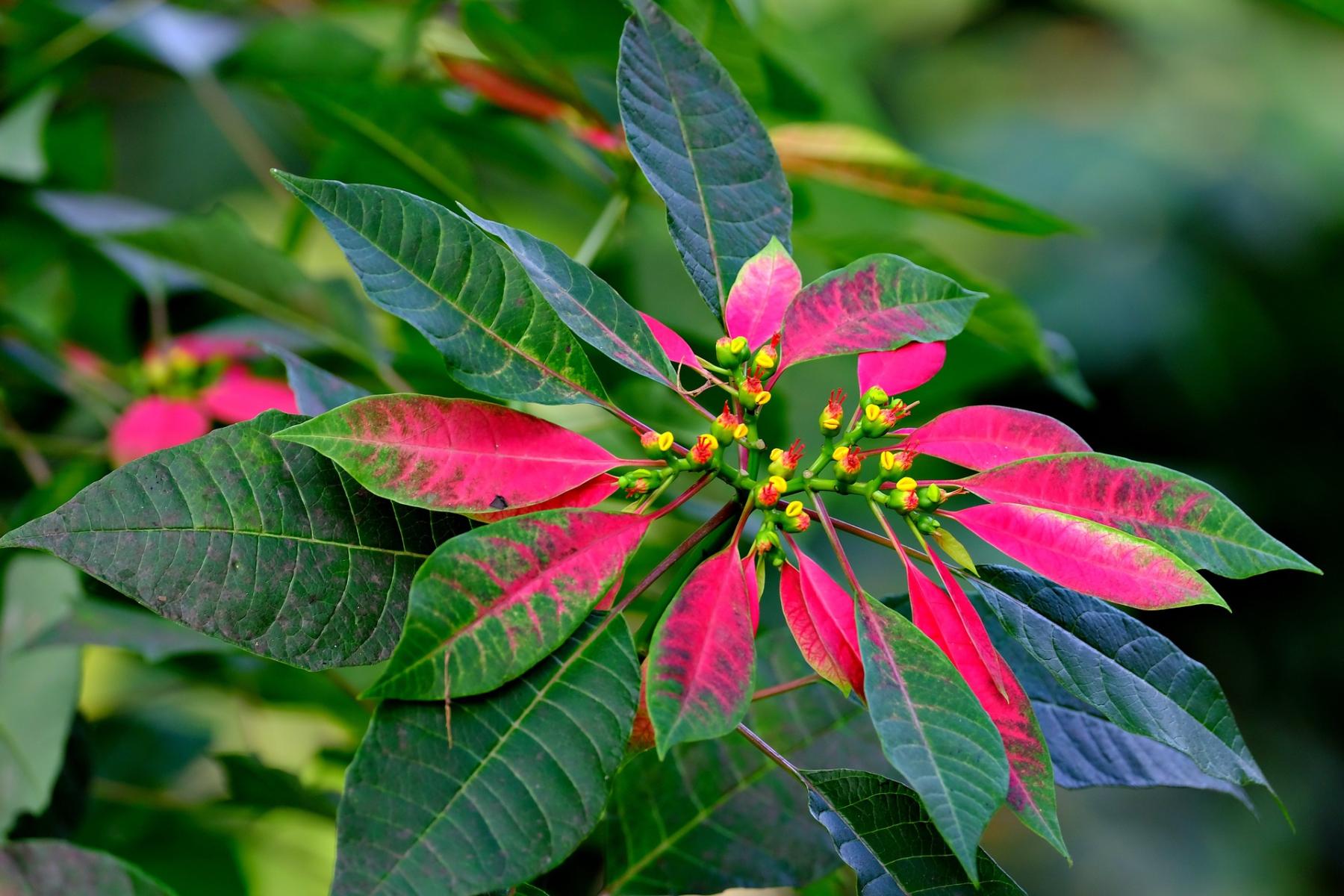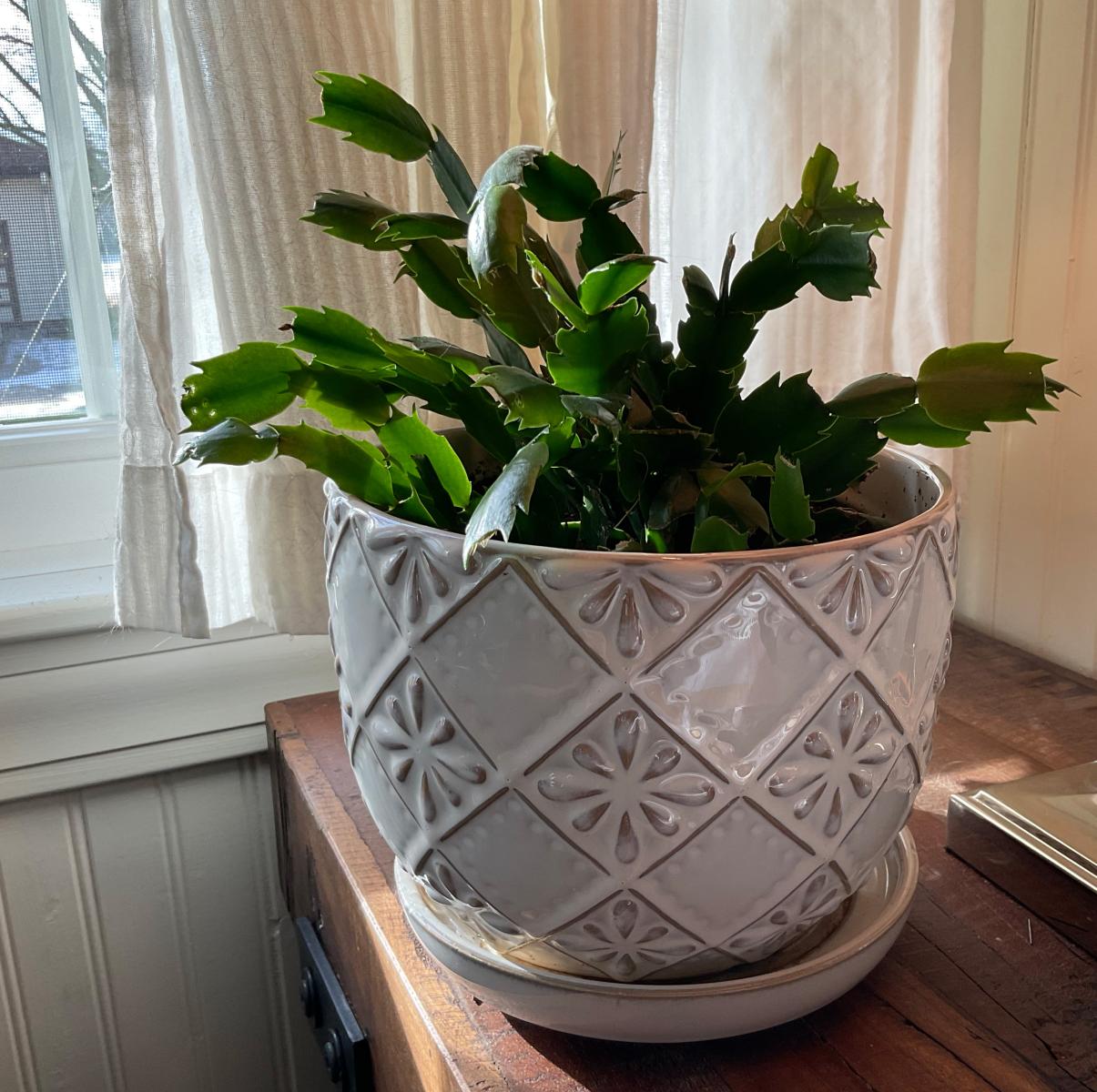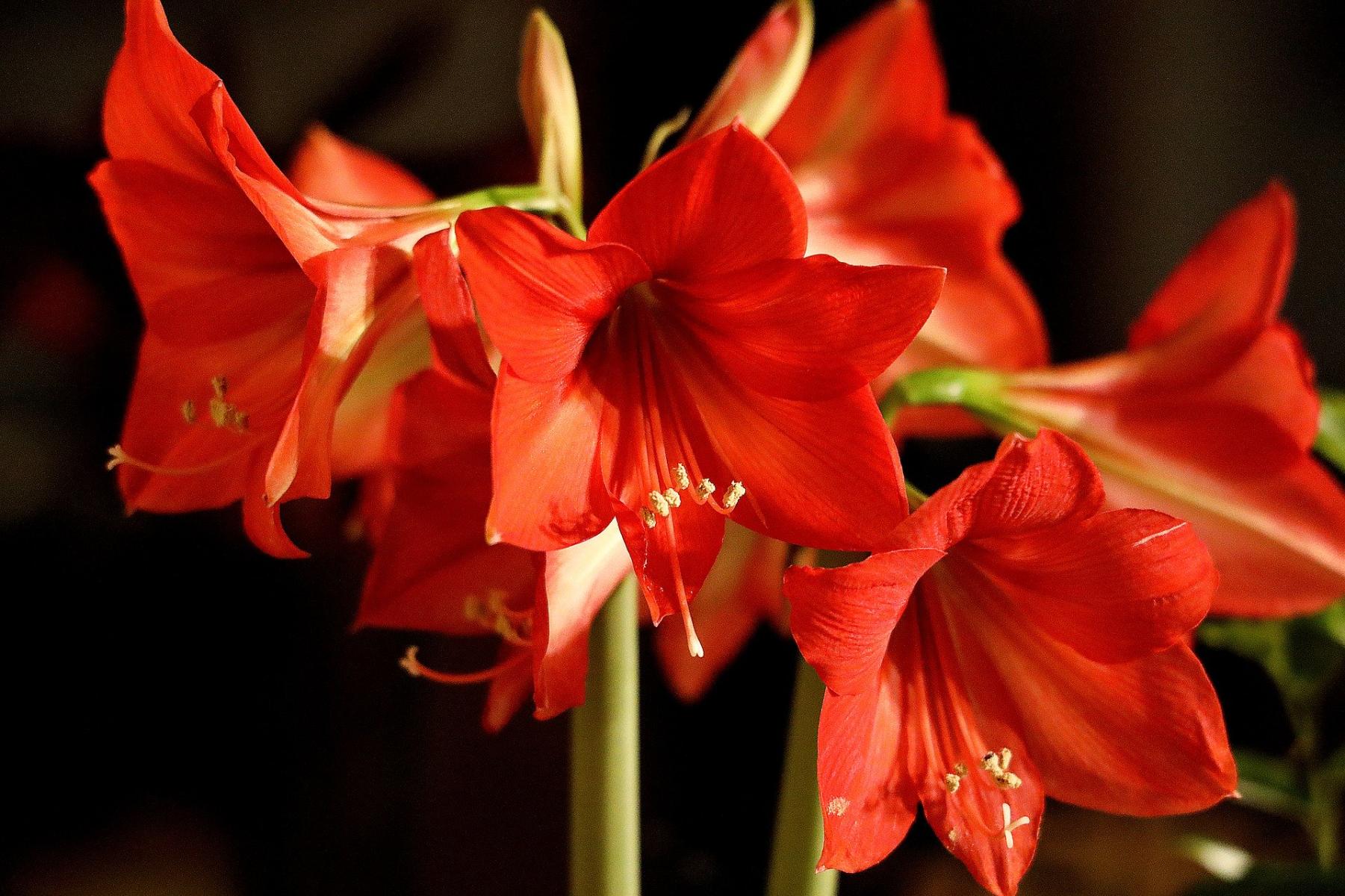
During the holidays, poinsettias become the decorative plant of choice for many. And many green thumbs who enjoy working with plants are eventually tempted to save a poinsettia after the holidays with the intention of getting it to re-bloom the following year. Christmas cactus and Amaryllis plants also make great houseplants - easy to grow and rebloom.
Growing and reblooming poinsettia, Christmas cactus or Amaryllis is really not as difficult as many people think. Follow these tips for success with your plants.
 Poinsettia Care
Poinsettia Care
Depending on several cultural factors, your poinsettia will do one of two things after the holidays. It will either hold onto its’ leaves or drop them.
If the plant holds onto its’ leaves, treat it like a houseplant. Make sure it’s in a sunny window with maximum sunlight. Ideally, provide cool night temperatures of 60-65 degrees, so placing the plant in a cool room or next to a cool window is fine. Just keep it away from very cold drafts and furnace vents that will dry the plant out very quickly and possibly even scorch the leaves.
Keep the soil evenly moist, but not soggy. About 2 weeks after receiving the plant, fertilize it with a complete fertilizer. Fertilize weekly after that until the plant loses its colorful bracts.
If the plant loses its’ leaves, place it in a cool location where it still can get some light, such as on a basement window ledge and let the soil dry out. Do not allow it to get so dry at any time that the stems start to shrivel. If the stems start to become wrinkled, shriveled or brown, soak the soil with water then put the plant back in its' resting location. Avoid setting the plant in places where the temperature rises above 60° F degrees; an average temperature of 50- 55° F degrees is best. Allow the plant to rest until spring before encouraging new foliage growth.
Bring the plant out of its resting stage in late April or early May. Cut the stems back to 3-5 inches from the soil. Place the plant in a bright, warm place and water whenever the soil dries out. Plants can be set outdoors when the night temperatures stay above 60 degrees. Just remember, your plant may pick up whiteflies while it is outside – a serious pest of poinsettia and very difficult to eliminate. For this reason, it might be better to keep the plant indoors as a houseplant.
Throughout the growing season, periodically pinch or trim back the growing shoots to keep the plant compact and well-shaped.
If the plant was outdoors for summer, when night temperatures begin dipping below 55-60° F bring the plant indoors to a sunny location. Inspect the plant well before bringing it back indoors for any hitchhiking insects.
Beginning about September 25, poinsettias need complete darkness every day from 5 p.m. to 8 a.m. To do this, cover the plant with a cardboard box or put it into a dark closet. Be sure to bring the plant back out into sunny conditions during the day. Continue this dark treatment until the bracts begin to show color.
 Christmas Cactus
Christmas Cactus
Place your Christmas cactus in a well-lighted location. Water it well, adding fertilizer once a week while it is blooming and allow the top 1” of soil to dry out between each watering.
Some flower buds may fall off after you receive the plant – this is normal and is due to Christmas cacti sensitivity to changes in the environment. Other reasons buds are aborted include too many buds on the plant for it to support and underwatering or overwatering.
Turn the plant often so all parts of the plant receive even sunlight; this will help the plant maintain a nice shape. When the plant is done flowering, continue to care for it in a similar manner throughout late winter and spring. In the summer months when the plant is not blooming, allow the top 2 inches of soil to become dry between waterings.
To encourage your Christmas cactus to re-bloom, use one of the following methods.
- Keep the plant cool at night, 50-55 degrees, and 65 degrees during the day throughout the months of October and November. Very cool night temperatures will initiate flower bud development. Or…
- During the months of October and November, place the plant in uninterrupted darkness for 12-14 hours daily as outlined above for poinsettia. Be sure to bring the plant out into a well-lighted location during the day. Provide temperatures of 60 degrees at night and not over 65 degrees during the day. Once the flower buds are 3/8 to 1/2 inch long, the darkness treatment can be discontinued.
 Amaryllis
Amaryllis
Often amaryllis sold as gift plants come already potted in a container, but if yours didn't then choose a container that is only 1-2 inches wider than the bulb. The preferred soil mix for amaryllis is high in organic matter; a peat, perlite/vermicullite mixture would work well. Place the bulb in the container so that it is only halfway below the soil. Water it thoroughly, until water drips from the drainage holes. Allow the soil to dry, and rewater sparingly until the plant's roots are well developed, and growth has begun. Overwatering can lead to bulb rots.
Place the plant in bright light, but not direct sun to lengthen flower life. Once growth begins, apply a complete fertilizer, either slow release or liquid. Water soluble fertilizer can be applied about twice a month. Consult the label on slow release products for the right amount and application timing.
Temperatures of 70 to 75° F are fine until the bulb begins to root, and leaves or flower stalks(s) begin to appear. Then move the plant to the coolest location possible in the house, where it will still have good light. Foliage is weakened by being forced too rapidly under higher temperatures. During bloom, cooler conditions will prolong the flowers.
Usually leaves appear first, followed by one or two flower stalks. Each stalk can have anywhere from 2 to 6 flowers each. Once the flower start to fade, pinch or cut them off. Remove the flower stalk by cutting it down to just above the bulb nose, once all the flowers are gone.
In August, begin withholding water and allow the foliage to die. Once the leaves are dried and brown, cut them off a couple inches above the top of the bulb. Place the plant, pot and all, in a cool (50-60°F degrees) dark place for 6 to 8 weeks. Bulbs can be kept in dormancy as needed to time their bloom for the holiday season.
After at least 6 to 8 weeks have passed, bring the plant out into a sunny location and begin watering it as normal. Amaryllis like to be a little pot bound, so they only need repotting every 2-3 years. A flower bud should appear in a few weeks.
Bulbs that had four or more healthy leaves throughout the summer should be large enough to flower; those with less foliage may not flower. However, with proper care non-flowering bulbs can be redeveloped for blooming in future years.
Images
- Poinsettias need a long-night treatment to encourage their bracts to color-up for the holidays. Image from Pixabay.com.
- Christmas cactus are a very easy houseplant to grow, suitable even for a beginning green-thumb. Image from Sarah Browning, Nebraska Extension.
- Amaryllis grow from a large bulb and produce showy flowers on tall stalks. Image fromPixabay.com.